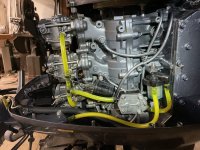Luke
Nice workshop and garvey. Either you scored some vintage locker workbenches or you are working from a surviving tech school.
Eric
Nice workshop and garvey. Either you scored some vintage locker workbenches or you are working from a surviving tech school.
Eric







